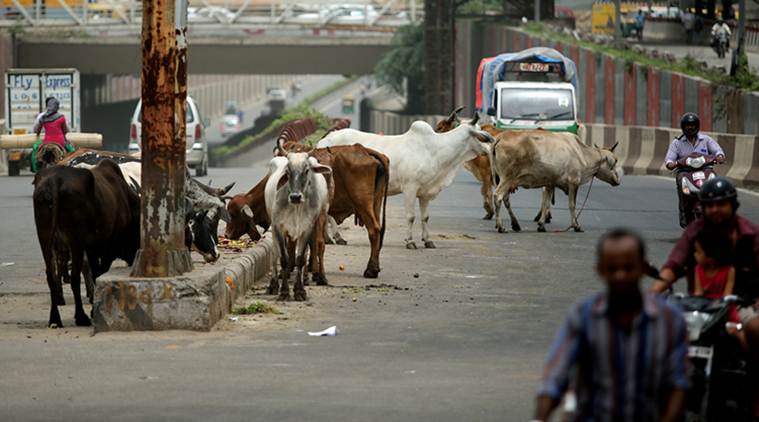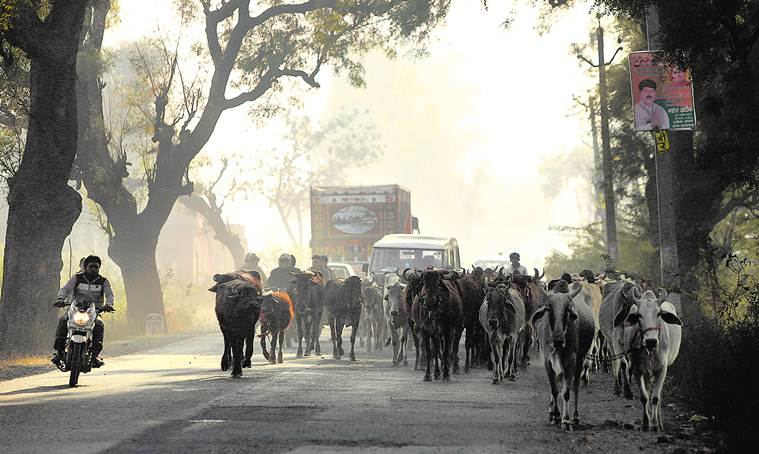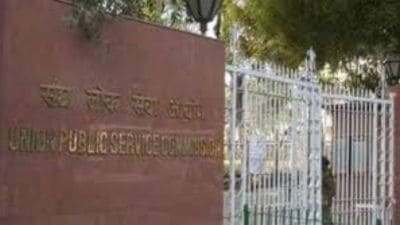- India
- International
Govt has a use for stray cows: As surrogates to give birth to ‘elite cows’
While the latest data on stray cattle is not available as the final results of the 20th Livestock Census (2019) are yet to be made public, the number stood at 5.29 million in 2012, with Uttar Pradesh alone accounting for about 1 million.
 The proposal comes at a time when some states like Uttar Pradesh are struggling to find a solution to the stray cattle problem.
The proposal comes at a time when some states like Uttar Pradesh are struggling to find a solution to the stray cattle problem.
IN AN attempt to check the rising stray cattle numbers, the Department of Animal Husbandry and Dairying (DAHD) has proposed using stray cows as surrogates to give birth to ‘elite cows’ (with high milk yield).
According to sources, Dr Praveen Malik, Animal Husbandry Commissioner, made this recommendation at the National Conference of Agriculture Zaid/ Summer Campaign 2020 held in Delhi last week.
In his presentation, ‘Strategies for protection of summer crops from stray/ free/ open grazing animals’, Malik recommended a multi-pronged strategy, which includes promoting sex-sorted semen, back-crossing of cross breeds with indigenous breeds to improve fertility, and using stray cows as surrogates.
He also suggested value addition and enhanced utilisation of cow products like milk, ghee and urine.
When contacted, Malik said: “We are planning to do a pilot on this (stray cows as surrogates). We would like to show people that unproductive animals can be made useful. This is happening in other countries like Denmark and New Zealand.” He said the pilot project would be launched in government-owned farms.

 Stray cattle at the Aligarh-Mathura highway. (Express Photo: Gajendra Yadav)
Stray cattle at the Aligarh-Mathura highway. (Express Photo: Gajendra Yadav)
FROM OUR ARCHIVES | In parched Bundelkhand, a new burden for farmers: Build fences to keep cattle out
Speaking to The Indian Express, K M L Pathak, former Deputy Director General (Animal Sciences), Indian Council of Agriculture Research, said the proposal was “workable and effective”. Saying that it would boost rural economy, he said that “stray cattle are genetically inferior and, by using this method, we can produce high quality cows.” Pathak said cows aged between 2 and 12 years can be used as surrogates.
The DAHD, which comes under Union Minister Giriraj Singh, has also suggested setting up more cow shelters and cow sanctuaries.
The proposal comes at a time when some states like Uttar Pradesh are struggling to find a solution to the stray cattle problem.
While the latest data on stray cattle is not available as the final results of the 20th Livestock Census (2019) are yet to be made public, the number stood at 5.29 million in 2012, with Uttar Pradesh alone accounting for about 1 million.
While a gender-wise break-up of the stray cattle population is not available, it is estimated that males outnumber the females. Confirming this, Malik said this was the “general perception”. Asked how the surrogacy proposal would check the problem of male stray cattle, Malik said: “Their number will come down through sex-sorted semen technique, which is being done now.”
 Chasing away cows in Tikapur village of Aligarh district. (Express Photo: Gajendra Yadav)
Chasing away cows in Tikapur village of Aligarh district. (Express Photo: Gajendra Yadav)
According to the provisional results of the 20th Livestock Census, the total cattle population in the country increased from 190.9 million in 2012 to 192.52 million in 2019. West Bengal (19 million) heads the list, followed by Uttar Pradesh (18.8 million) and Madhya Pradesh (18.7 million). Cattle constitute 36 per cent of the total livestock population (535.82 million).
Of the total cattle population, 145.11 million are female (98.16 million indigenous, 46.95 million exotic). While 32.58 per cent of the indigenous female cattle are ‘in milk’ (aged over 3 years), 16.84 per cent are ‘dry’. On the other hand, 42.59 per cent of the exotic female cattle (aged over 2.5 years) are ‘in milk’ and 12.07 per cent are ‘dry’.
According to the data, 3.68 per cent of the indigenous female cattle did not calve even once. The corresponding figure for exotic cattle was 2.48 per cent.
Apr 16: Latest News
- 01
- 02
- 03
- 04
- 05







































